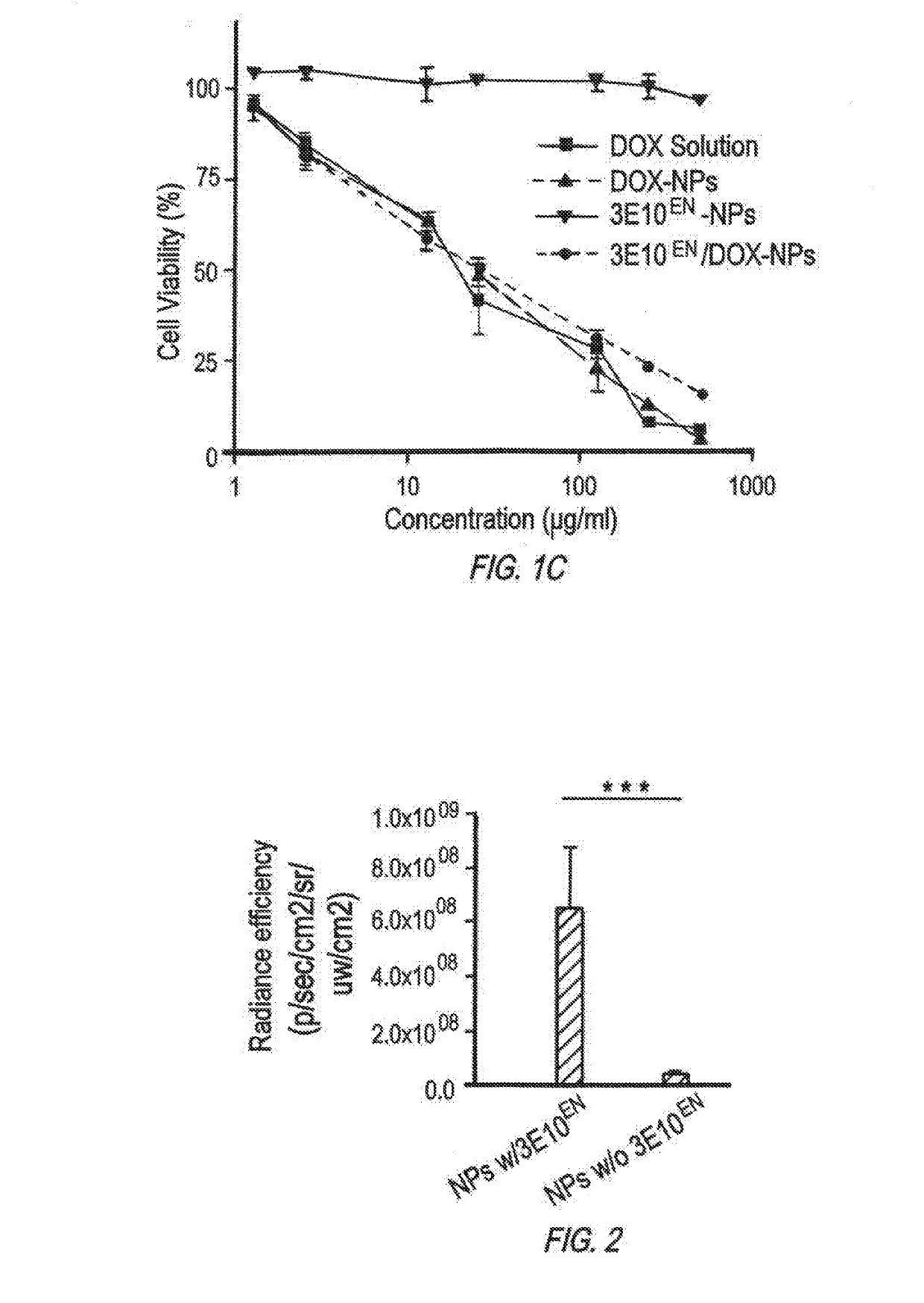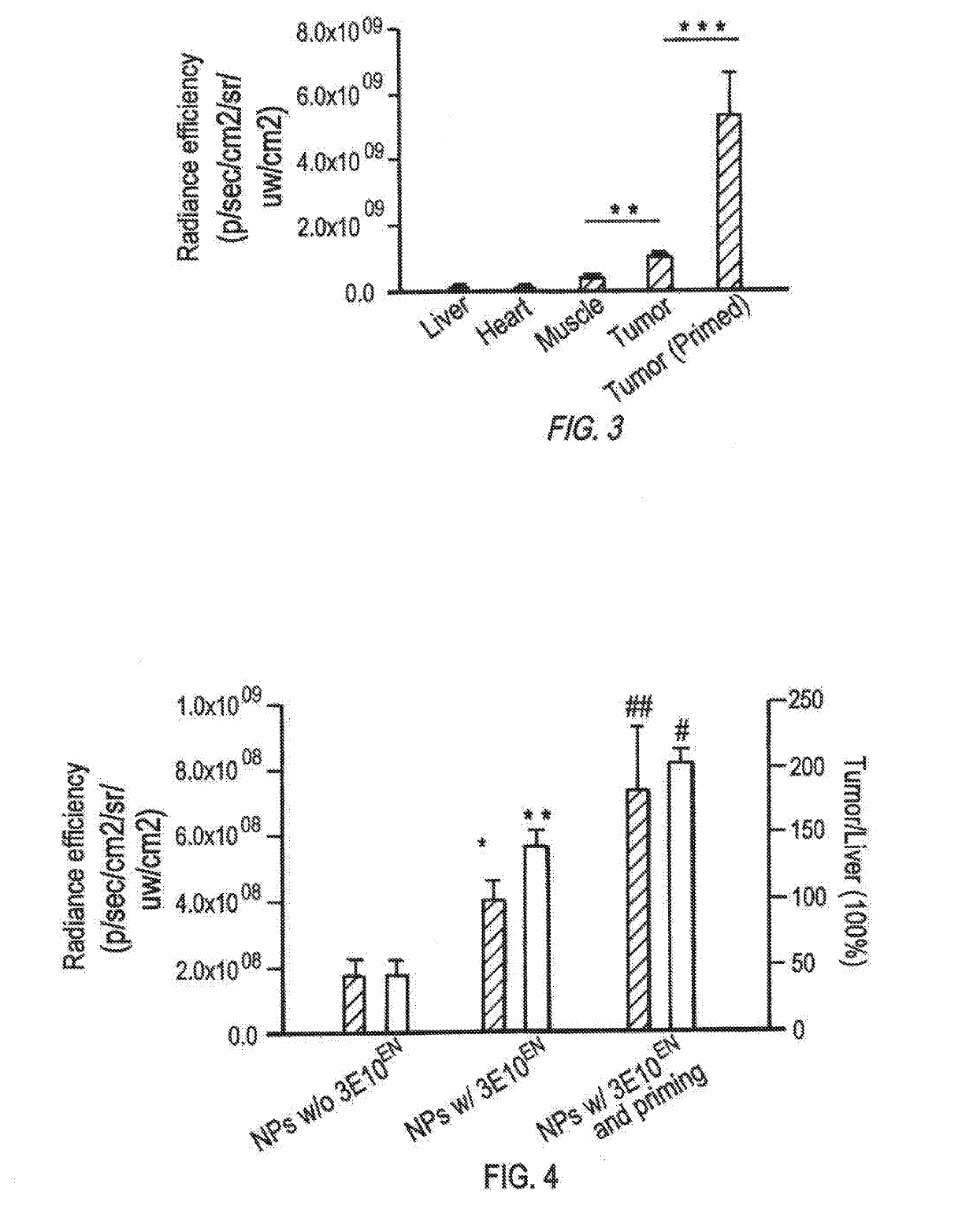Antibody-mediated autocatalytic, targeted delivery of nanocarriers to tumors
- Summary
- Abstract
- Description
- Claims
- Application Information
AI Technical Summary
Benefits of technology
Problems solved by technology
Method used
Image
Examples
example 1
and Characterization of Nanoparticles with and without Surface Anti-DNA Autoantibody
[0393]Materials and Methods
[0394]Materials and Cell Culture
[0395]All chemicals were purchased from Sigma-Aldrich unless otherwise noted. The mouse mammary tumor cell line 4T1 was obtained from American Type Culture Collection (ATCC) and cultured in DMEM medium (Invitrogen) supplemented with 10% fetal bovine serum (Invitrogen), 100 units / ml penicillin and 100 ug / ml streptomycin (Invitrogen), in a 37° C. incubator containing 5% CO2.
[0396]Synthesis of PLGA-PLL
[0397]PLGA-PLL was synthesized according to previously reported procedures (Zhou, et al., Biomaterials, 33(2):583-591 (2012), Han, et al., Nanomedicine (2016)). Briefly, PLGA (3 g, 50:50 PLGA Acid End Group; i.v. ˜0.67 dL / g; Absorbable Polymers, AL) and 200 mg poly(ε-carbobenzoxyl-L-lysine) (PLL) (MW 1000-4000 Da, Sigma) were dissolved in 6 mL dimethlyformamide in a dry round-bottom flask under argon. Dicyclohexyl carbodiimide (58 mg) and 0.31 mg d...
example 9
N) Di-scFv Delivers Nanoparticles into Living Cells
[0459]Materials and Methods
[0460]Cal12T lung cancer cells were treated with control buffer, free di-scFv (SEQ ID NO:12), free PLGA nanoparticles with encapsulated IR780 dye, free di-scFv+free PLGA nanoparticles with encapsulated IR780 dye, or di-scFv-conjugated PLGA nanoparticles with encapsulated IR780 dye for 20 minutes. The cells were then visualized under a fluorescence microscope to detect the IR780 signal.
[0461]Results
[0462]Significant IR780 signal was only detected in the cytoplasm of the cells treated with the di-scFv-conjugated nanoparticles, and not in the cells treated with the free nanoparticles. These data demonstrate that di-scFv can deliver conjugated nanoparticles into the intracellular compartment of living cells.
[0463]Remarkably, the IR780 signal was restricted to the cytoplasm and was not detected in the nucleus where di-scFv is expected to localize. To determine if the conjugated nanoparticles were holding di-scF...
PUM
| Property | Measurement | Unit |
|---|---|---|
| Time | aaaaa | aaaaa |
| Size | aaaaa | aaaaa |
| Size | aaaaa | aaaaa |
Abstract
Description
Claims
Application Information
 Login to View More
Login to View More - R&D
- Intellectual Property
- Life Sciences
- Materials
- Tech Scout
- Unparalleled Data Quality
- Higher Quality Content
- 60% Fewer Hallucinations
Browse by: Latest US Patents, China's latest patents, Technical Efficacy Thesaurus, Application Domain, Technology Topic, Popular Technical Reports.
© 2025 PatSnap. All rights reserved.Legal|Privacy policy|Modern Slavery Act Transparency Statement|Sitemap|About US| Contact US: help@patsnap.com



